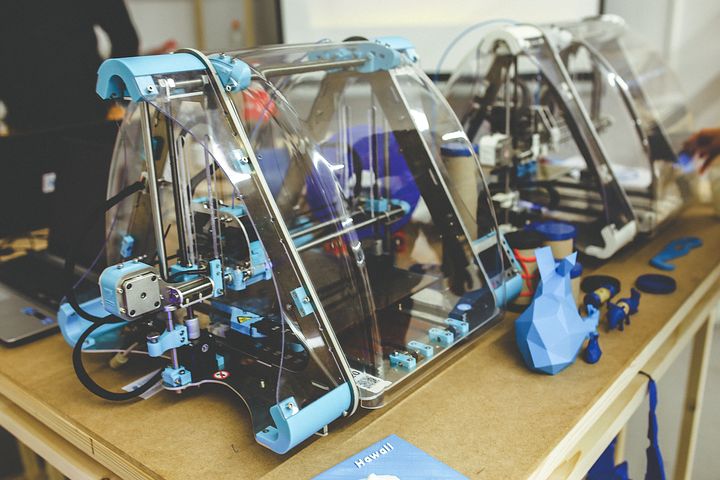
Not so long ago, 3-D printing looked like the best thing since sliced bread — which, come to think of it, isn’t as exciting as it used to be. We were thinking that additive manufacturing would make it easy to create prototypes, small runs, and extreme customization. We were ready for 3-D printed food, clothing, and body parts.
Now that the thrill of novelty has worn off a little bit, we have to admit that there are some negatives.
The environment
Leaving aside the body parts and hypothetical pizzas, most 3-D printing uses plastic filament, a material with byproducts and leftovers that end up in landfills, as well as in oceans and other bodies of water, not to mention the bodies of birds and animals.
The kind of plastic filament used for 3-D printing can theoretically be reused or recycled, but in practice it is not the kind of plastic collected for recycling, and recycling it in-house is not usually cost-effective for manufacturers.
And while automation generally reduces waste (through greater precision and less error), additive manufacturing in articular creates lots of waste. “In rapid prototyping, you’re making iteration after iteration until you get it perfect,” says Nicole Panditi of UC Berkeley. “What happens with all those iterations is you throw them away. And that’s where all the plastic trash comes in.”
One of the most popular materials for 3-D printing, ABS plastic, releases carcinogens when it’s heated, which it is for 3-D printing. Other materials are likely to have their own issues, too.
Finally, the energy cost for additive manufacturing can be 50 to 100 times greater than that for traditional manufacturing methods.
Safety
Using a 3-D printer can subject you to nanoparticles of plastic you can inhale, to carcinogens, and to toxic fumes.
Kitchen gear printed out with additive manufacturing ends up with a lot more texture than injection molded or extruded plastic goods. This can create lots of opportunities for bacteria to grow and develop. Basically, the surfaces can’t really be cleaned. Sealants can help with this problem.
What’s more, not all plastic filaments are food safe, though there are some designed for use in objects that may come into contact with food.Check the materials fact sheets when you make decisions about safety relative to 3-D printing.
Cost
Plastic filament is inexpensive, as materials go, and the printers themselves can be economically priced as machines go. But the up-front cost is likely to be significant, nonetheless.
Perhaps more importantly, 3-D printing is very slow. An object made by 3-D printing may take so long to complete that traditional manufacturing could make 100 of the object in the same time. And of course each object costs just as much as the one before it; there is never any efficiency of scale involved.
While making prototypes with additive manufacturing often makes sense, and highly customized items like prosthetic limbs might be ideally suited to additive manufacturing, it’s not going to take over in the average factory any time soon.
Rexroth electric industrial motion control, on the other hand, is a mainstay of manufacturing. When you need service and support for yours, call on us. We’re specialists with decades of experience.
